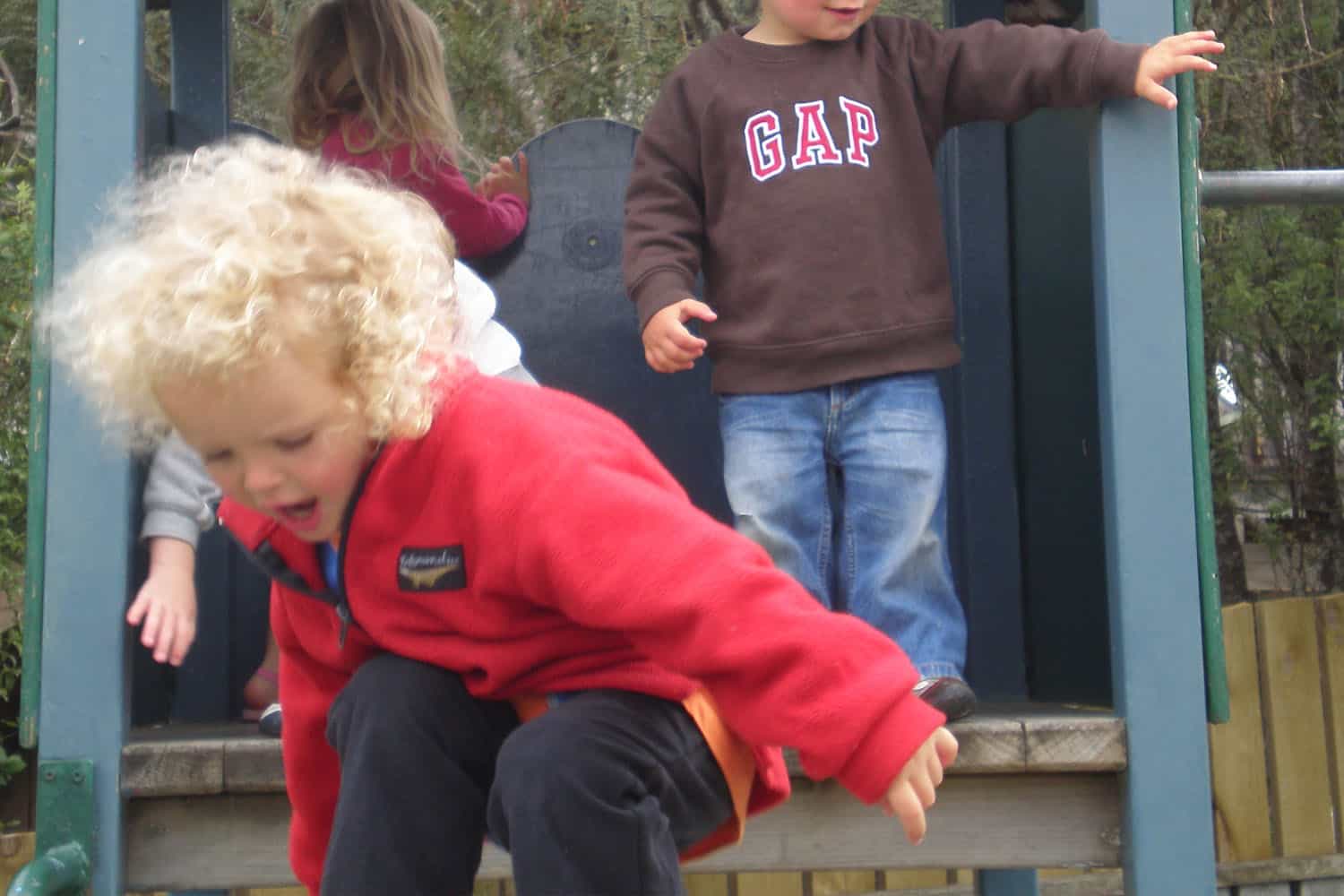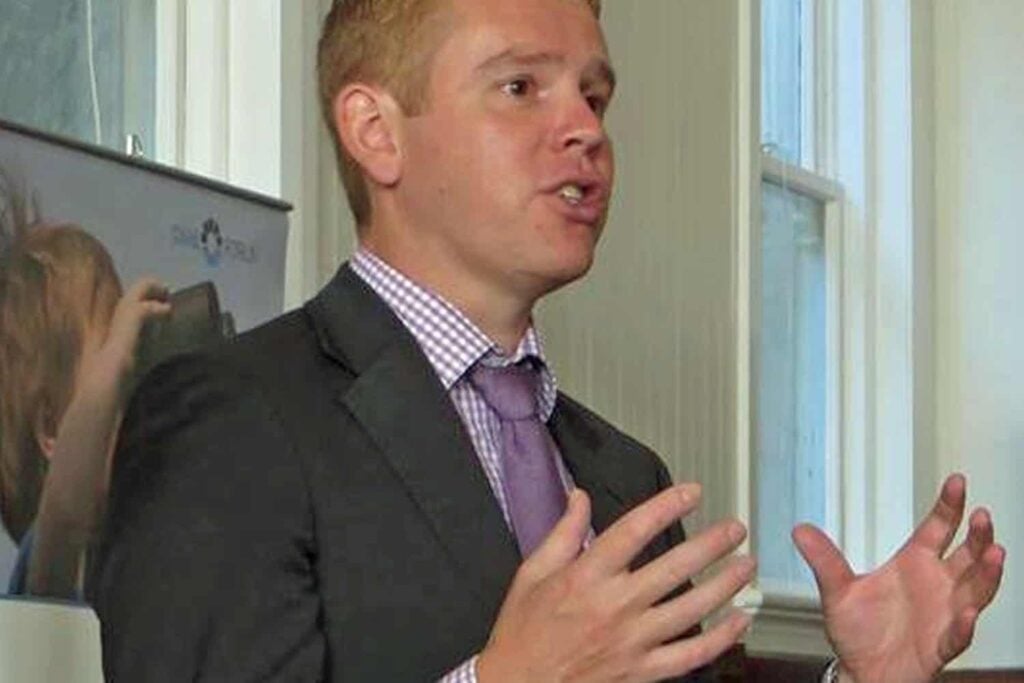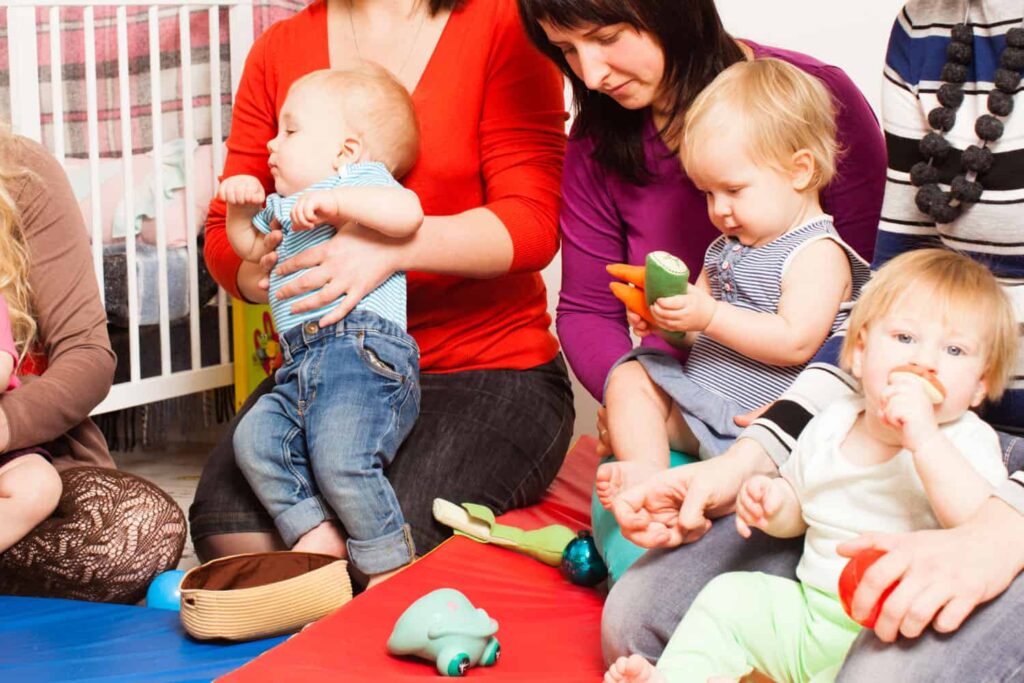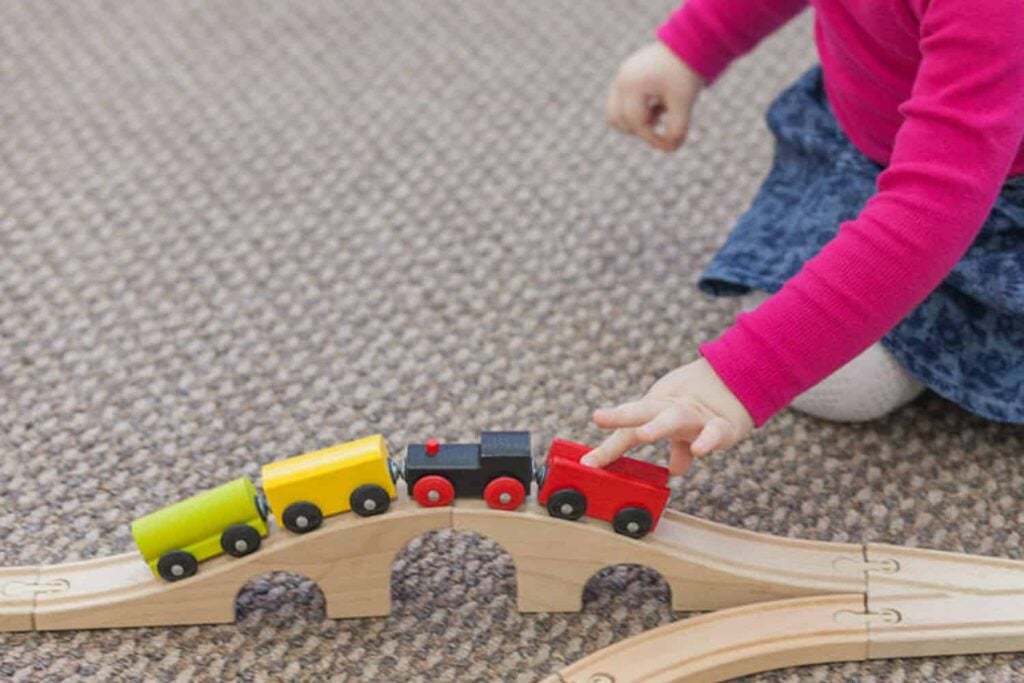Here are the findings on the quality of ECE for children from the perspective of teachers from the 2020 ECE Quality and Employment Survey.
| The Quality of ECE Experienced by Children According to their Teachers At the start of the 2020 school year, more than 4,000 teaching staff in ECE services across NZ were surveyed. The survey found that: – 26% of teaching staff could not endorse the quality of their ECE service for children. – 29% of teaching staff did not have time to develop individual relationships with the children in their care. – 11% of teaching staff from teacher-led centres worked in centres that usually operated at below the legal minimum adult-to-child ratio requirements. – 50% of teaching staff from teacher-led centres undertook cleaning duties typically expected of a cleaner and when they were counted in the adult-to-child ratio. – The allocation of non-contact time was variable, with 10% who were regular teaching staff having no non-contact time and 11% given 1 hour per week. Many of these findings are similar to previous surveys since 2014. This tells us that despite policy and regulatory changes in the sector over recent years there is still a long way to go. |
Three further reports from the 2020 survey are available:
- Report 2. Private and community early childhood sector differences
- Report 3. Staff pay and retention
- NZ Medical Journal paper. Early childhood education staff are falling through a vaccination policy gap in New Zealand
The Quality of ECE Experienced by Children According to their Teachers
About the Survey
At the start of the 2020 school year (late January – February) the Office of ECE surveyed teaching staff in early childhood services across NZ.
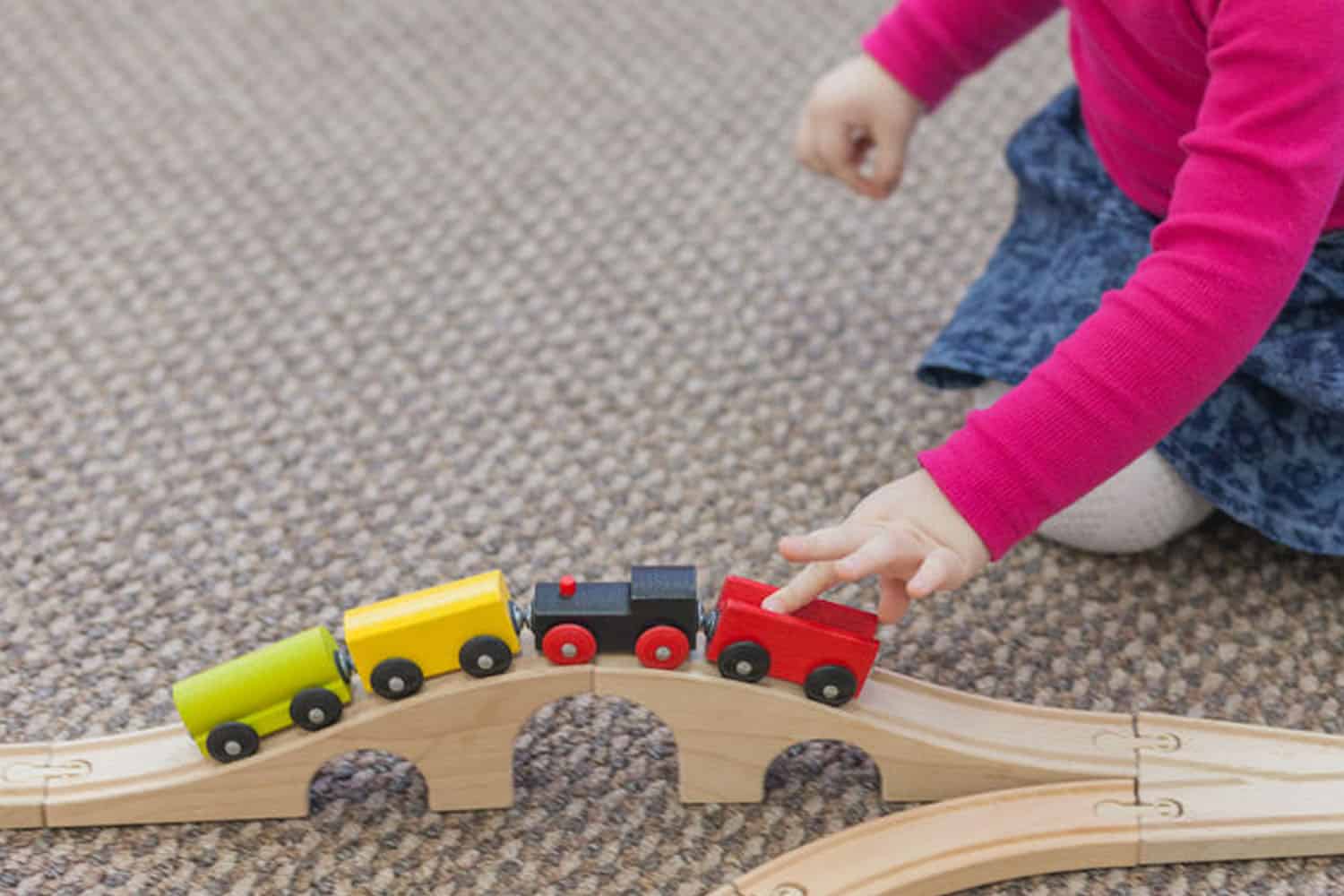
A call for participants went out to ECE services and was posted in ECE teacher social media groups. Participation in the online survey was voluntary – there was no obligation to do the survey and no incentive was offered. Participants were provided with an online link and they typically spent 10 to 11 minutes on the survey.
The unexpected and phenomenal response to the survey, after reaching 3,000 responses within just a few weeks and then quickly up to 4,000 when it was decided to close it off earlier than planned before it increased further, suggests that teaching staff had confidence in the survey and saw value in participating.
The survey asked participants a range of questions. This report is focused on what respondents said in relation to questions on standards of care and education in their service.
The Respondents
A total of 4,021 teaching staff from across NZ participated in the survey.
Most of the respondents (93% in total) came from teacher-led centres. These comprised kindergartens owned by kindergarten associations (6.4%), licensed hospital-based services (0.3%), early intervention centres (0.1%) and other early childcare and education centres (86.2%). The high proportion of respondents from teacher-led centres reflects that these centres provide the largest source of employment for teaching staff and are the dominant form of ECE provision.
Home-based ECE service visiting teachers and co-ordinators made up a further 5.6% of the survey sample. Other teaching staff who responded worked at parent-led services: playcentres (1.2%) and TKR Trust Kōhanga Reo (0.2%).
What the Quality is like
Enrolling children in ECE is a culturally expected thing for parents in NZ to do. The delivery of ECE services is funded by the government to achieve access to early childhood education for all young children. Around 96% of all children in NZ attend ECE before they start school.
In policy we look at quality in ECE in terms of measurable aspects such as the percentage of services that:
- meet regulatory requirements (have not had their licence downgraded to provisional or cancelled);
- are funded for 80% or more qualified and certificated teachers; or
- are awarded a 4-year review by ERO (note that ERO has recently changed this and is no longer specifying when a service can expect its next review).
Service operators may additionally focus in their marketing on things such as:
- the educational philosophy, or cultural beliefs and language practices that underpin their programme;
- what they might offer such as a vegan menu, a getting ready for school programme, and a nature-based learning programme; or
- how visually appealing the building and grounds are, for example if the building has been “architecturally designed” as an ECE institution.
But using this survey we can gain a different sort of insight into quality with a direct question to teaching staff:
“Hypothetically, if you have or had your own children, would you be happy to enrol them either at the service/s where you work or at another service of comparable quality?”
A quarter of all teaching staff (26%) from across the sector answered no.
Their experience of ECE as teaching staff contributed to or informed their view. Here is a sample of comments that showed this:
- I now know what goes on behind the scene and for me (as a parent) it is not satisfactory.
- Because I have seen the negative way teachers talk about children, including my own.
- I went to relieve in a centre I put my child in after he left to go to school and the place was a crazy over-filled zoo of kids. I felt so awful for having put my son there.
- Because I know all of the ‘bad’ things about my current centre.
- They cut a lot of corners to give the appearance of quality care, when actually it is about profit-making. Concerns are often brushed aside and teachers not listened to.
- My child initially attended before I taught. Once I realised what the centre was like I decided that it was not a centre I wanted my children to attend anymore.
- My child is with me but if I wasn’t there to keep an eye on him, he wouldn’t be going. I have witnessed how poorly children are treated in ECE and I have lost faith in the system and trust in other teachers. The only saving grace is there are cameras in my son’s classroom.
This finding is not a surprise. It reflects previous surveys. In 2014 and 2017 the percentages of survey respondents who answered no to this question were 25% and 27% respectively.
Can we gain insight into how to change ECE so this proportion will drop? To some extent we can using the comments survey respondents volunteered. Specifically, here are the main themes regarding areas that need to be addressed.
Theme 1: Meeting children’s fundamental needs
The overarching theme across the respondents’ comments was that the wellbeing of children needs to be put first. Much of the respondent comment concerned children’s fundamental needs not being adequately met. Here is a sample of some of the comments offered by respondents:
- They don’t care about the actual children. I would want my children in a centre where the whole organisation cares about all the children and what is best for them. Teachers can only do so much to advocate for the children!
- I feel they are like prisons.
- It’s a day care not a learning service.
- I want my child respected and responded to… NZ doesn’t appreciate that.
- The premises were developed to minimum standards. My centre does not meet children’s need for space, green spaces, intimate spaces etc. I want my kid to run on grass – we have hard Astroturf!
- Because of the way ECEs are set up and operating and the regulations that govern them, they do not meet the child needs.
- ECE has become baby farming. Too many kids, not enough space, not enough nature and relationship with nature, long hours, and poor food quality provided.
- Too many kids in centres – too stressful. It’s like herding sheep.
- No because of the accidents and the non-help for priority children. I do not feel safe myself with children hurting, therefore I would not allow my loved children to suffer by enrolling them here.
- The children in our centre are classed as vulnerable, but I do not believe they get what an average child needs let alone what these poor children deserve.
- We crowd control 90% of the day. Not peaceful at all. Babies needs are not met within an acceptable time.
- I think the tamariki here miss out on the bonding and emotional day-to-day living.
- I prefer more love and care given to the children, not just supervised and ‘kept busy’.
- The number of teachers (and often these are relievers who don’t get involved with the children) is too few for so many children. A child’s safety is daunting in these circumstances!
- I am pregnant now and hesitant to put my child into any service due to the drop in quality I have seen recently.
- My son attended 10 years ago when children came first and ratios were fab. But that’s no longer the case.
- Our ‘purpose built’ centre is not fit for purpose at all. There is barely any room to move resources, the inside areas are tiny and the outside space for the under-threes is a joke.
- My children would have needed more space, and things to build their imaginations with.
- For a 2-year-old child I would not as at our kindergarten the equipment both inside and outside is not ideal. Also, where hands are washed the younger children cannot reach the taps on their own.
- I’d choose homebased as centres are about farming children now.
- The centre is too large, loud, and busy.
- I think my child is at a disadvantage as the place is not well resourced, no bikes or many balls. Outdoor equipment is tired as is the indoor equipment too.
- The noise and constant stressful atmosphere aren’t ok, plus the children are always hurting each other due to boredom.
- The classrooms are too big. There are 46 children in my classroom. However due to sessions we can see over 60 children per day.
- Not enough play space. Too many teachers and children with limited space.
- We have just been instructed, it’s ‘official’, that we’ll work only to minimum MOE ratios.
- Because of high numbers you are often left with in one area, you can’t spend the time you would like to with your own key children as you are too busy having to deal with issues with mixed ages 2.5yrs to 3.5yrs in one room and 3.5yrs to 5yrs in the other room, sharing the same playground, and the younger children come into the older classroom in the afternoon while they use their classroom for sleepers.
- Because of the systemic problems of understaffing, I know supervision is minimal.
Theme 2: Employment practices
How staff are treated was a theme in the respondents’ comments because how staff are treated has a flow on effect to children. Here is a small selection of just some of the many comments on this:
- I wouldn’t put my children into this organisation as I feel that the staff are overworked and underpaid, and because of this the children suffer.
- As much as we try and aim for quality, the staff are stressed and not supported which is then impacting on the children.
- The staff are not performing to their best ability due to pressures from management and working conditions.
- Too many children are neglected because teachers have so much other work to do while they on the floor.
- The way I have seen some staff treated and how they treat each other makes me feel it would not be a nurturing and kind environment for my hypothetical child.
In addition, quality was affected by a need for stable, ECE trained staff who are suitable for the job. Respondents said things like:
- Not enough ECE qualified staff that know about planning and implementing and using teachable moments to engage with learning.
- I now see more lazy teachers not extending children’s interests. I think they don’t know how. Lots of teachers don’t understand free play.
- So many new staff faces (relievers) which come and go.
Time to Get to Know Children as Individuals
Ideally teaching staff have time to get to know each child in their care. These are young children; they depend and rely on those caring for them to know and understand their needs and respond in a timely and appropriate way to support their development and learning.
Sixty-six percent of respondents felt they could achieve this. Five percent of respondents did not answer, or they indicated that getting to know children was not applicable to their position.
However, over a quarter (29%) of respondents reported not having time to develop individual relationships with children. This is an increase from 26% in the 2017 survey and 17% in the 2014 survey. Clearly, there is a problem here that is not being addressed in policy, or if it is then it is not filtering through into the staffing practices of all services. So, from the comments survey respondents volunteered what factors or barriers stand in the way of teacher-child relationships that would turn this statistic around if addressed?
Barrier 1: Too many children
Some examples of comments were:
- You work out the number of children and divide it by the time you have during the day and it works out at about 2 minutes each.
- We have 110 – 120 children per session.
- When I am working in a classroom that has 75 children throughout the day, I am caring for each, and for every child, and therefore not building much of a strong relationship with any child.
- Often have multiple new children starting at one time.
Barrier 2: Insufficient staffing
Some examples of comments were:
- No time to develop individual relationships with children now what with staff hour cuts.
- Our room has had two teachers leave in the past 6 months and neither has been replaced. It is difficult and becomes more crowd control than anything else.
- There needs to be a change in ratios for nursery children allowing for more teachers due to age and stage of babies.
- With a daily roll of 49 to 55 children and only having 6 staff on the floor it is hard as we have about 10 aged under two years in need of extra attention and strategies.
- I am a qualified teacher with a non-qualified lazy teacher. And I have 26 kids in my room. It’s crowd control.
- I and my team are barely keeping our heads above water to supervise the tamariki let alone try to have one-on-one time. With the ratios the way they are there will always be tamarki that go under the radar no matter how hard we all try.
- I really feel for our older children as they get minimal interactions and are often missed out because we have to meet the younger baby’s needs.
- Most of my attention is therefore focused on the children who are putting other children in danger – biting, hitting, kicking, throwing blocks. The quiet children miss out. I am failing the “good children”.
- I feel we are too busy ‘putting out fires’, we work to the required ratio set by the Ministry, however, I feel this is not good enough.
Barrier 3: Routines and other tasks being given priority
Some examples of comments were:
- Even when nappy changing, I’m told I am too slow as I must get through 20 children in an hour!
- We are only doing routine stuff – there’s no time to sit and engage.
- Sometimes you see a child at the end of the day and you know little about their day.
- There’s no time for love and play with children.
- As much as we all try, management can get to stuck on routines, this can cause difficulty in relationship building.
- No time for interacting much with children when cleaning, keeping up with the routines, discussing matters with parents, and paperwork etc, all needs to be done in the space of an 8-hour day.
- If you don’t get things completed or haven’t cleaned up the mess, or reset the environment, your manager or curriculum leader starts asking questions and is breathing down your back.
- There’s an emphasis on the centre looking good, not being good in the centre.
- As a Visiting Teacher I am still required to develop a relationship with the children we visit but due to procedures and other admin duties this takes away from our core job.
Adult-Child Ratios in Teacher-Led Centres
The minimum legal requirement for ratios in teacher-led centres licensed for children to attend full-time is 1 adult to every 5 children aged under 2 years, and 1 adult to every 10 children aged 2 years and older (2 adults if between 7 – 20 children). Centres licensed for children to attend half-days only must have at least 1 adult to every 15 children over 2 years (or 2 adults if less than 30 children but more than 8 children). Adults must be present and actively supervising children. They cannot be counted within the staffing ratio if they are taking a break, working in the office, or on non-contact time. The Ministry of Education’s 2019 census of services (data provided by service owners) tells us that teacher-led centres generally exceed the minimum requirements. Kindergartens have an average of 7.5 children aged 2 years and older to every teacher. Other full-time education and care centres have a better ratio of an average of 6 children aged 2 years and older to every teacher.
In this survey, 46% of respondents from teacher-led centres reported their centres usually operated at legal minimum ratio levels and 39% exceeded the minimum requirement. Four percent of teaching staff did not know or could not say how well their centre was usually meeting the ratio requirements.
But, 11% of respondents reported that minimum requirements for adult-child ratios were usually not met at their centres. This finding is unchanged from previous surveys. In 2017, 11% of teaching staff and in 2014 12% of teaching staff reported that their centres usually operated under the legal minimum requirement. Clearly nothing has been done since 2014 to substantially change this and make sure that no centres are understaffed for children as per the minimum legal requirements.
On paper ratios can differ from practice
In the comments offered by respondents, a theme was that what centres communicated to parents and/or to the Ministry of Education was not necessarily the reality or the truth. Respondents said things like:
- Operating at the minimum – though the enrolment packs given to families state above minimum ratios.
- We use our office lady on the floor all the time and we are always at ministry (minimum) ratios even though we advertise to parents differently.
- Adults both in office and offsite counted on ratio even for funding purposes.
- When a reliever cannot be found, staff in the office are put in the books as being ‘in-ratio’.
- The manager is often rostered onto the floor so on the books it looks like she is in ratio, however she is always in the office during those days. This makes us way below ratio and makes it very stressful.
A review of the regulations on adult-child ratios is needed to include classrooms or groups
Respondents at centres with larger numbers of children raised issue with the rule that ratios are calculated across the entire centre and not for individual rooms or groups of children. Here is a small sample of the comments on this issue:
- Our centre is meeting the minimum. But, in our room we can be running at a ratio of 12 children or more to adult.
- It’s not okay when you have 2 teachers to 25 kids in a toddler room but they say it’s fine because the ratio is done across the toddlers’ room and preschool.
- Because we go by an overall ratio rather than room by room it means some rooms are pushed to the absolute max.
Note that the regulation for the maximum number of children that could attend a centre was changed from 50 to 150 children in 2011. Regulations for adult-child ratios have yet to be updated accordingly.
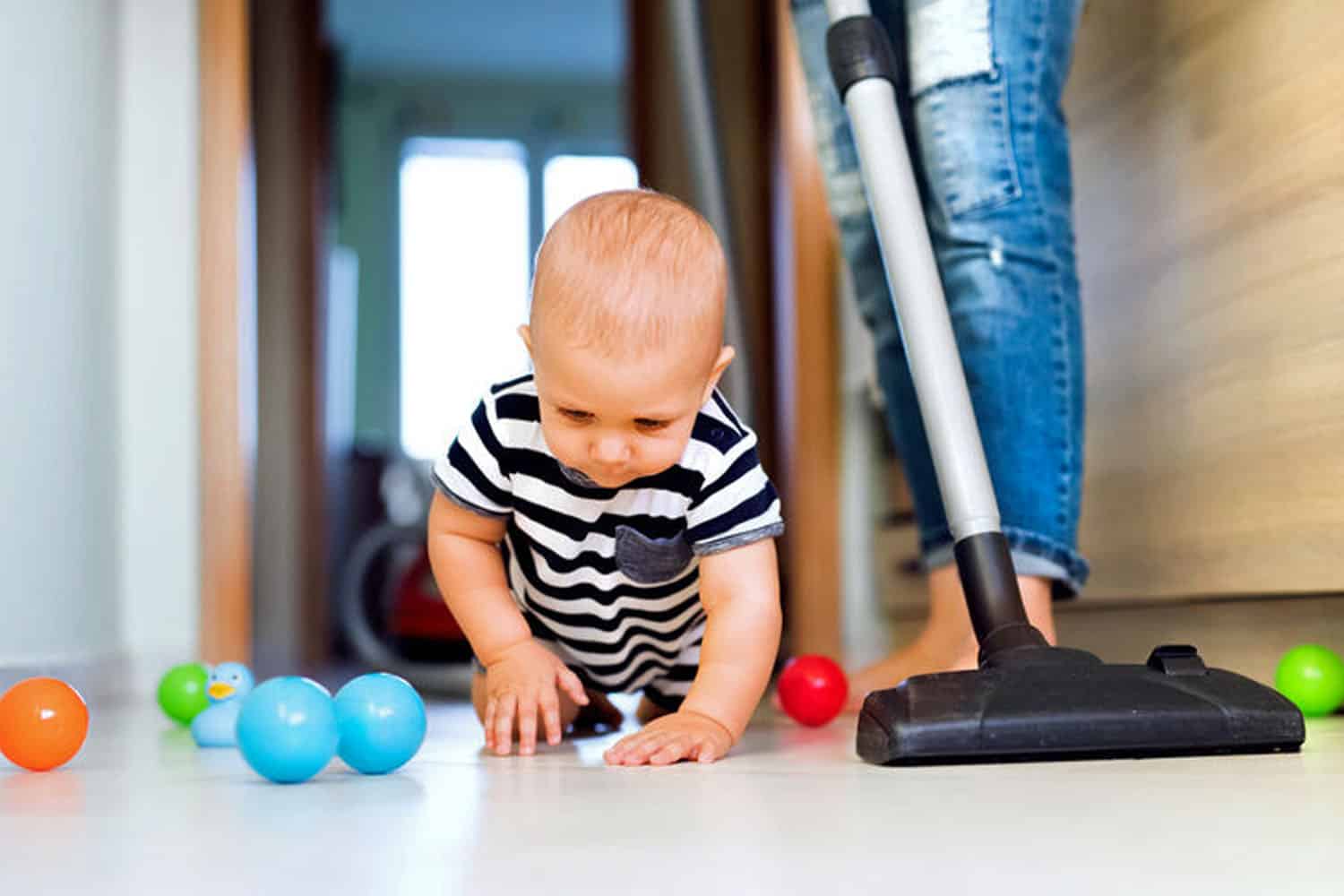 Cleaning Duties Teaching Staff Were Required to Perform in Addition to the Care and Teaching of Children
Cleaning Duties Teaching Staff Were Required to Perform in Addition to the Care and Teaching of Children
Respondents at teacher-led centres (excluding services that are parent-led and home-based) were asked if they regularly performed the work of a cleaner while they were also part of the adult-child ratio in their centre. Half (50%) said yes. They did chores such as:
- We mop and clean toilets, disinfect and clean all resources and shelving, washing dishes and dry, sweeping floors, wash/dry/fold clothing and towels, clean walls, windows, waterblast our wooden decking, clear out rubbish bins.
- Wiping the fridge and window sills, scrubbing non-slip mats, wiping the light switches tops of fridge microwave, etc. we have a cleaning schedule.
Cleaning is defined here as work of a nature that would ordinarily come under the job description of a cleaner. It excludes cleaning that is a necessary part of being a teacher for the immediate health and safety of children such as wiping up a spilt drink, wiping table tops between snack/meal times, sterilising baby toys between uses, or replacing a child’s soiled cot sheet with a clean sheet.
An accepted practice
Doing “the dirty work” seems to be an accepted cultural practice in the ECE sector that is not widely challenged or discussed. As one respondent explained: “primary and secondary teachers wouldn’t do this kind of cleaning.” There was no exception for those who are trained and qualified teachers as shown the following sample of respondent comments:
- I hate it. I spent three years at university to get a degree and now half the time I am cleaning. In a week I spend probably one whole day just cleaning if you were to add it all up. Tasks: Kitchen, Bathroom, Tables, Playroom, Sweeping the pathways outside. (A qualified teacher with a practising certificate and 3 years of teaching experience)
- I didn’t know my degree was for cleaning. Toilets, bathroom, mopping floors and vacuuming the whole centre daily, and all while in ratio with Children. (A qualified teacher with a practising certificate and 3 years of teaching experience)
- We are the cleaners, wiping down walls, skirting boards, window frames, windows, cleaning the toilets scrubbing the walls floors and ensuring everything is sanitized at the end of the day, vacuuming the whole centre, and mopping the whole centre. This has to all be done by the time the last child leaves as we don’t get paid after the last child leaves. (A qualified teacher with a practising certificate and 8 years of teaching experience).
- Perhaps the number of chores we do contributes to people’s views that our work doesn’t require as much intelligence or respect as Primary School. (A qualified teacher in their first year of teaching),
Saving on cleaning costs
Cleaning is an area that services may choose to make budget savings on as revealed in the comments offered by respondents. For example, a kindergarten association awarded a cleaning contract to a company that was “cheap and the standard is low”. The teachers therefore had to take on cleaning the toilets and floors. Another respondent commented “my centre employed the director’s husband and father-in-law to clean and they did a crap job.” One centre that changed cleaners to reduce the cleaning bill had the teachers “take on the extra cleaning that our old cleaners used to do”. Another respondent said “the service earns enough money to hire cleaners but don’t like or want to do it. I’m required to scrub staff toilet, wipe seat and hand basin, mop floor, and vacuum the centre every day”. A different teacher complained “our whole team hates it! We have brought it forth so many times that we need a cleaner but we get the: “it’s not in our budget” response.
A potentially dangerous practice
Respondents expressed concerns about the risks to children and the emotional strain to themselves of being required to do cleaning while also responsible for supervising and assisting children. Here is a small sample of their comments on perceived risks:
- I feel it is unsafe, children cannot be supervised when I am in the bathroom cleaning it. Also, common for them to eat afternoon tea while I am supposed to be cleaning. It makes me very uncomfortable.
- It’s rather stressful as I often cannot do both jobs properly. Often trying to clean bathroom while checking sleeping children and other children playing so it means I’m spread across three rooms.
- The big tidy up at end of day is most worrying as we’re not watching the children and more accidents happen.
- Not fair on the children coz I can’t supervise them or spend time with them when I’m doing cleaning.
- Just started working here this year. Finding it hard to clean with the children. Unsafe with mopping etc.
- I feel very stressed while doing the cleaning and counted in the ratio because I cannot do everything at the same time. And, there are too many relievers (relief teachers) who do not know what they need to do!!! Which means, I need to work out everything and keep all the routine up!
It may be that requiring teachers to do the work of a cleaner when they are supervising and teaching children violates the intent of the adult-child ratio regulation. Additionally, it may be contrary to the professional responsibilities of a teacher toward children; making it difficult for ECE teachers to meet the Teaching Council’s Code of Professional Responsibility. These are matters that need to be investigated.
Access to Non-Contact Time
The amount
Non-contact time is used for such things as to work on individual planning, assessment, parent contact, preparation of activities, and administration. Ten percent of respondents surveyed from across the ECE sector reported that they have no weekly non-contact time allocation, 11% have one hour, 37% have two hours and 31% have three or more hours of non-contact time a week. Eleven percent of respondents indicated that either could not say, for example it depended on children not showing up or going home early, or it was not applicable to them, for example they were casual workers or they were managers whose role included off-the-floor time.
Issues and questions for further investigation
A theme that emerged in the comments was that “having” was different from “getting”. While respondents might “have” x number of hours of non-contact they might not always be able to “get” it due to staffing numbers and conditions at their service from day to day, week to week.
So, when are teaching staff doing such things? We know from a report on teacher pay, that many teaching staff work additional unpaid hours to meet the requirements of their job.
Perhaps also, they could be writing learning stories for example, whilst they are on the floor with children. This may not violate adult-child ratio regulations because adults are still present; but as to whether they are actively watching and engaged with children may be another matter?
Summary
This report has presented findings on the quality of ECE from the perspective of those who work on the ground within services. In policy, the quality of ECE is looked at in terms of measurable aspects, such as the number of services that have had their licence downgraded to provisional or suspended. But by asking respondents if they would be happy to use their ECE service or another one of comparable quality we can gain a different sort of insight into quality. Just over one quarter of respondents (26%) answered “no” to this question. From respondent comments we can gain insight into how to change ECE so that this proportion will drop. The themes regarding areas that need to be addressed were meeting children’s fundamental needs and employment practices.
Young children need to form relationships with their teachers, for emotional security and for teachers to get to know their needs well. However, 29% of respondents did not have time to form relationships with the children in their care. Barriers included having too many children, insufficient staffing, and routines and other tasks being given priority. The situation appears to be worsening; in the 2014 and 2017 surveys 17% and 26% of respondents respectively reported not having time to form relationships with children in their care.
In teacher-led centres, 11% of respondents reported that their centre usually operated under the legal requirement for adult-child ratios. This finding is consistent with earlier surveys so clearly nothing has been done to substantially change this. Comments offered by respondents raised an issue of services having a different (worse) ratio than what they advertised to parents or reported to officials. Respondents also raised concerns that within a classroom or area, a teacher could be left with more children than what was safe because ratios were calculated across the entire centre.
Half the respondents from teacher-led centres (50%) regularly carried out the duties of a cleaner while they were also required to be working with children and counted in the adult-child ratio. Respondents were concerned about the risks to children (for example of mopping the floor around children) and the difficulty of keeping an eye on children especially across multiple rooms or areas, and more accidents happening. Doing the “dirty work” seems to be an accepted cultural practice; and being a degreed qualified teacher makes no difference. Further reasons behind this practice were saving on cleaning bills, and that teachers’ wages can be lower than the cost of hiring professional cleaners.
Effective teaching leads to better outcomes for children. For this to occur, non-contact time for teachers to do such things as planning and assessment is vital. Most respondents had at least a few hours weekly of non-contact time, however excluding staff for whom this was not applicable (e.g., casual staff) 10% had no non-contact time and 11% had only one hour a week of non-contact time.
The survey shows where substantial scope lies for improvement. Specifically, the areas that need to be addressed include:
- Making sure that children’s fundamental needs are met.
- Not having so many children that teaching staff are engaging in crowd control.
- Ensuring sufficient staffing.
- Enabling teaching staff to focus on working with children, and not giving routines and other tasks greater priority.
- Recognising that employment practices influence the quality of ECE (e.g., if staff are overworked, poorly paid, not ECE trained, not up to the job, and not consistently present/ permanent staff).
- Making sure that the regulatory requirement for adult-child ratios is met in practice in all teacher-led centres.
- Introducing adult-child ratio regulatory requirements for classroom or group size in teacher-led centres.
- The expectation that teaching staff will perform the duties expected of a professional cleaner, and educating employers on the risk of teaching staff doing this when they are part of the adult-child ratio. and
- The provision of non-contact time for teaching staff.
… REPORT ON the ECE Quality and Employment Survey ENDS


